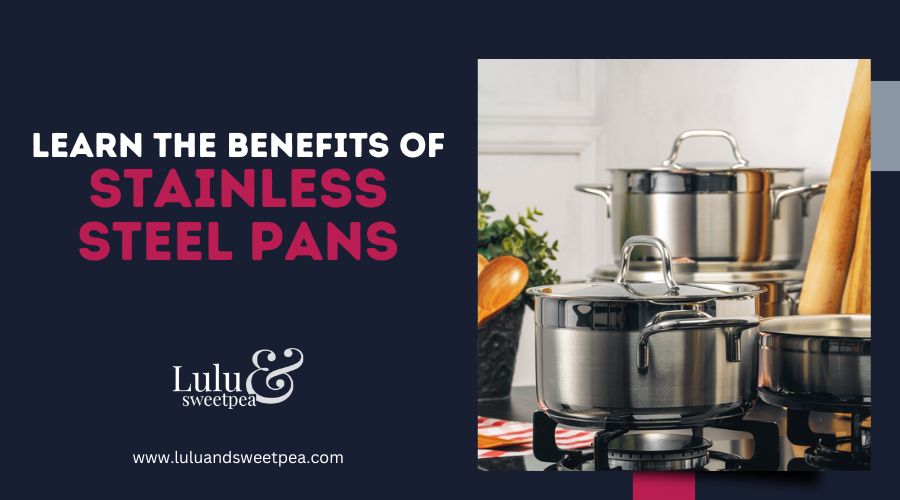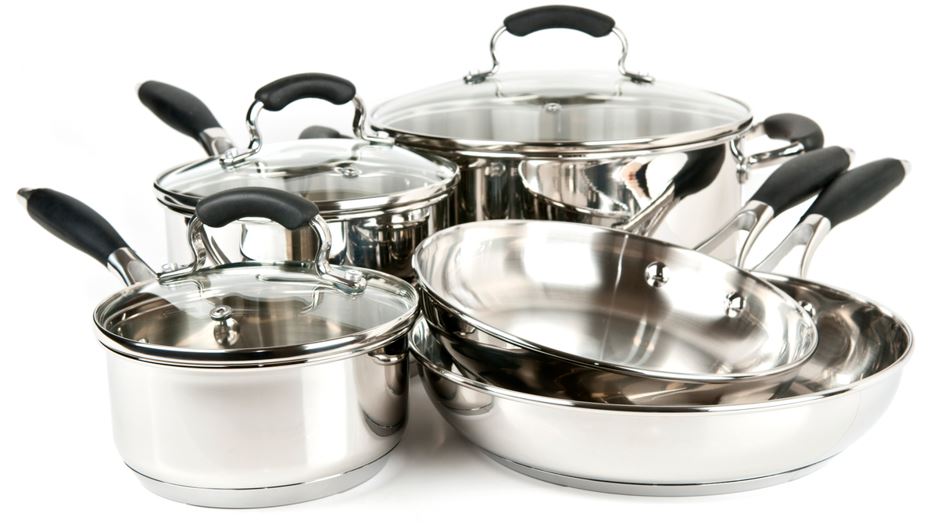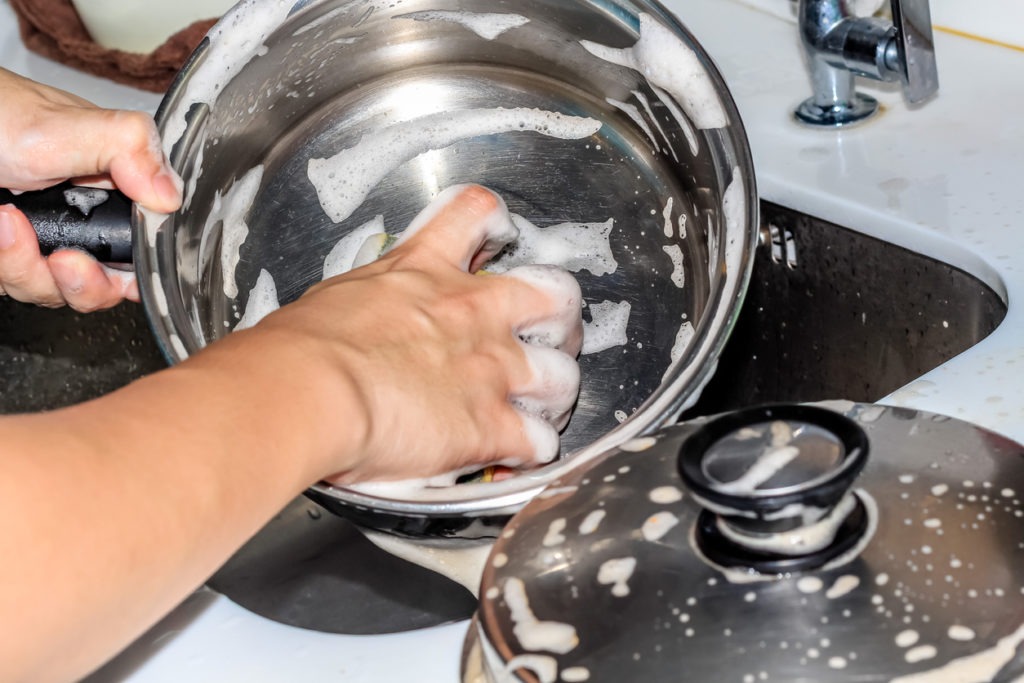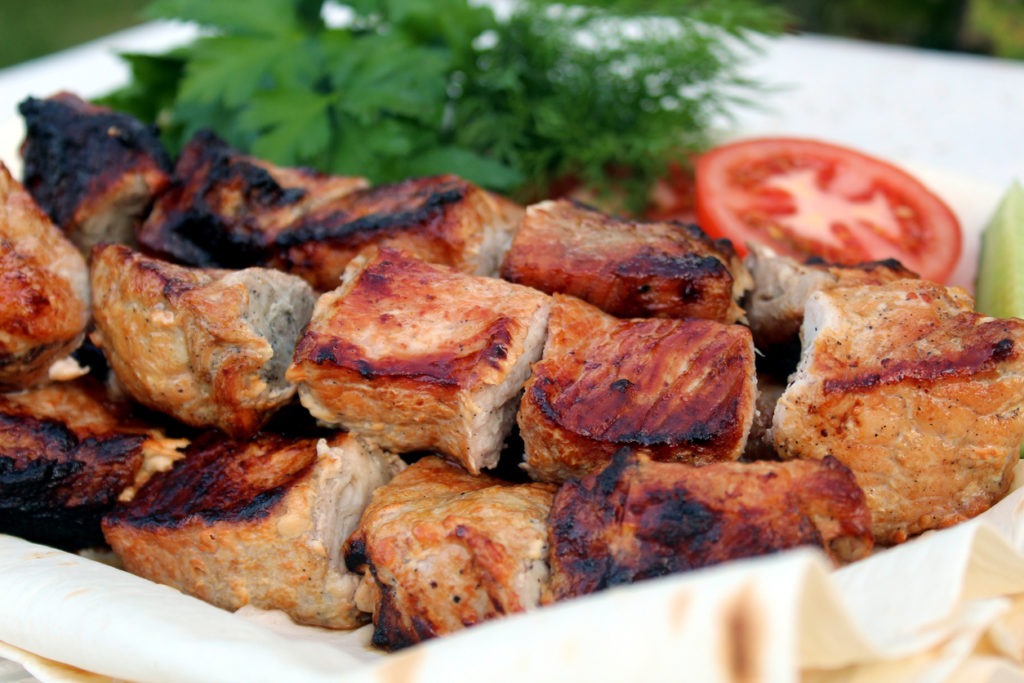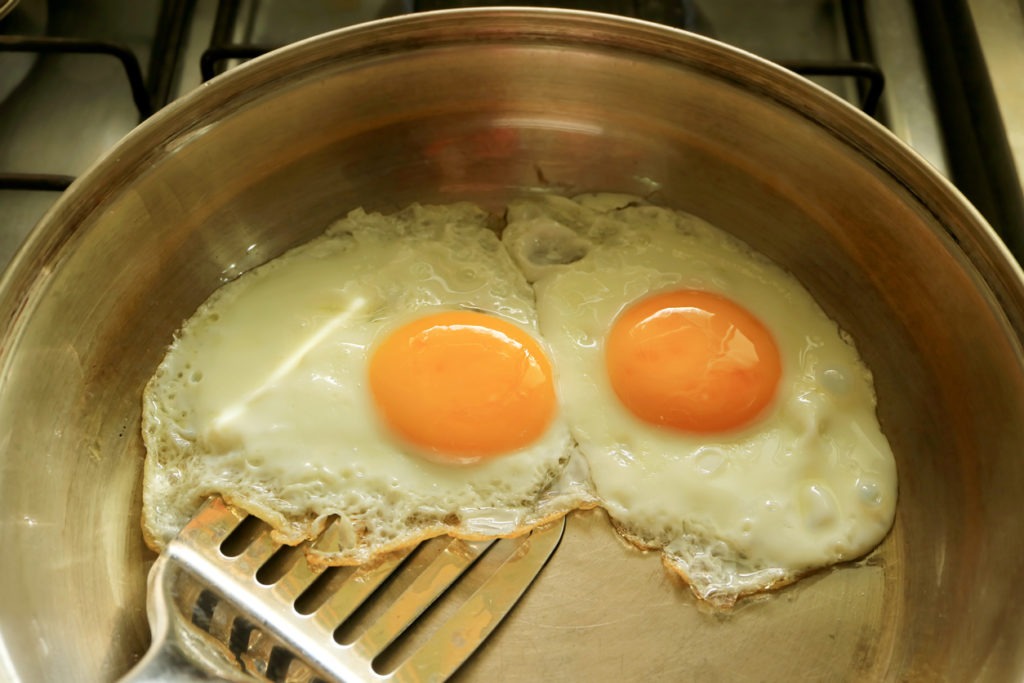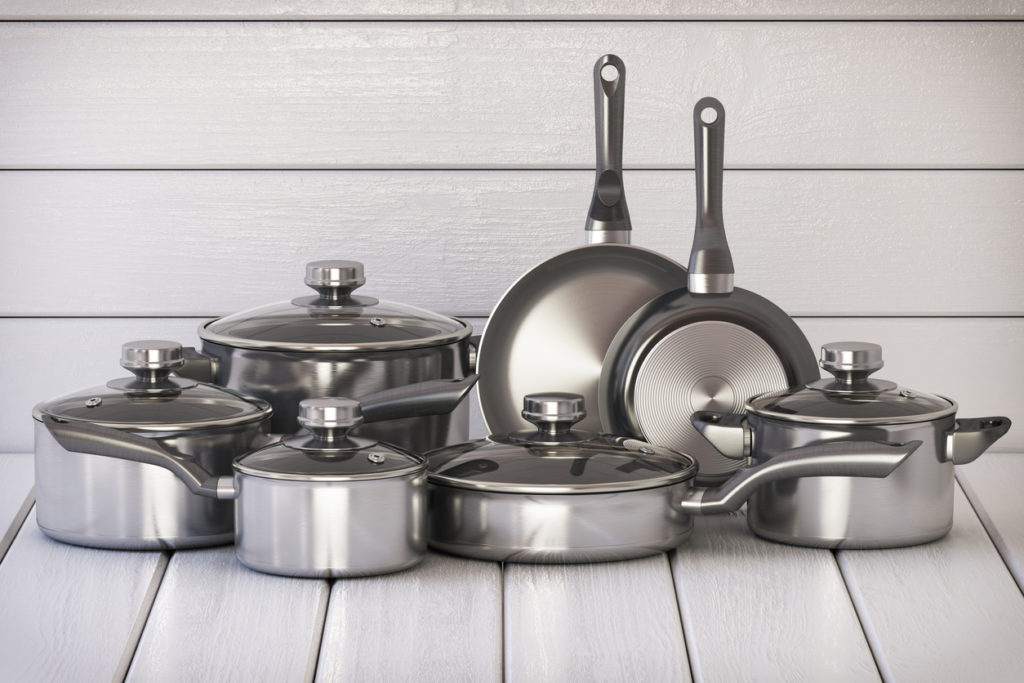Pans can be made of various materials, such as ceramic, cast iron, stainless steel, aluminum, copper, clay and stoneware, and carbon steel. The most expensive cookware consists of copper and premium stainless steel. Although going all-out with your pans may feel risky, it is undoubtedly a good investment! Having pans made of these expensive materials have non-reactivity, which ensures that the taste of the food you’re cooking will not become undesirably bitter or metallic, and excellent heat conduction, which is integral in cooking the best meals.
This article will help you discover more about stainless steel pans! What’s so distinct about this type of pan? What are the benefits it offers? Are these advantages convincing enough to motivate you to purchase the nearest appliance store? Let’s find out through this article!
Benefits of Stainless Steel Pans
1. Stainless
When dark stains appear on cookware, they stand out like a bright red firetruck in the middle of a dull desert prairie. No one likes these unwanted hues. Scrubbing off the stains and trying different techniques online to get those stains out is such a chore!
Luckily stainless steel pans exist! As its name mentions, this type of pan is “stainless.” These pans often look brand new and clean!
However, don’t be fooled. Just because it is “stainless” doesn’t mean it will never stain. Take note of the critical part of “stainless,” which is “less.” Conditions that can cause this type of pan to degrade are as follows:
- Cooking many meals that are too acidic or too salty;
- Harsh scouring;
- Using powerful chemicals to clean the pans after using them;
- Mechanical abrasions; and
- Keeping these pans in a highly humid environment.
2. Non-reactivity
What does it mean for pans to be reactive or non-reactive? If a food causes an undesired change in taste or color due to cooking it on a piece of specific cookware, then this pot or pan is reactive. On the other hand, if no odd taste or odor forms from using the pot or the pan, it is non-reactive.
Iron, steel, aluminum, and copper are examples of reactive materials, while stainless steel and ceramics are non-reactive. If you don’t wish your dish served on thanksgiving dinner to taste weird, save yourself from the humiliation by making sure the pans you cook with are non-reactive!
3. Heat Conduction
What does heat conduction mean? Heat conduction refers to how well the material transfers heat from the heat source (such as a burner or stove) to the food inside the pan or pot. Stainless steel conducts heat quite well and gets the job done.
If the pan does not conduct heat well, uneven distribution of heat or not much cooking may result. These instances are risky as these may lead to the raw cooking of meats, which are unsafe for consumption. Parasites and other pathogens may take advantage of this situation, but you can maximize a pan’s benefits by choosing a suitable material composition for your cookware.
4. Durability
Try to drop your stainless steel pan, and you will find that most do not bend, break, or crack! You can try banging it against the wall, scratching it with your other kitchen tools, or scrubbing it with your rough sponge: your stainless steel pan will still work like a charm!
Stainless steel is amazingly durable and can withstand significant pressures and heat. They are most often a stranger to problems related to chipping off coats. Stainless steel pans are harder than pans made of other materials like copper or aluminum.
5. Presentation
We’ll admit it: stainless steel pans look great. They have a shiny, silver, and polished luster that is unmatched. Adding it to your artillery of tools and cookware is a good choice. They match any home design, whether an urban and modern style or a homey cottage-core vibe! They also go well with any color theme, such as summer shades or monotone grays.
Because they already have this shiny appearance, you don’t have to buy polish or work too hard to clean them. They will always look good as new as long as you consider what was mentioned earlier about stains.
6. Easy to maintain and clean
Preparing and cooking homemade recipes takes a lot of time and effort. You must be drained by the end of your procedures, even after munching off all the delicious crumbs and drops of sauces you made. You’d take your plates to the dishwashing sink when you’re done eating and realize you still have cookware to clean!
Fortunately, stainless steel pans are relatively easy to maintain and clean. All you need is to wash off any grime and excess food particles, use your bubbly, soapy sponge to lather the pans and finish off by rinsing it with running water. If you want to increase the shimmering sparkle of your beloved cookware, you can grab a cup of water and vinegar to remove any dullness.
We encourage you to follow these tips to care for and maintain your stainless steel pans:
- Allow the stainless steel pan to cool off before soaking it in cold water to avoid warping.
- When the pan is already cooled, soak the pan in water that is soapy and warm. When you’re done with your meal, the person washing the dishes can easily wipe off food particles sticking to the pan can easily be wiped off.
- Do not let the stainless steel pans soak in the warm, soapy water for more than 2 hours.
- Cook with medium heat so that food will not stick too hard.
- Do not use stainless steel pans as a food storage container, especially for acidic foods like tomato soup or vinegar-based meals.
7. Useful for searing
In a culinary sense, searing refers to a cooking technique that exposes different ingredients, especially meat, to extremely high temperatures. Chefs perform searing to achieve that crisp browning on the surface. Indeed, meals look even more delicious with those marks! Impress your in-laws during the holidays with your seared meats.
8. Versatility
Your cookware has to do a lot, so it should be able to achieve various techniques.
Does your family often crave crunchy, juicy fried chicken, then pair it with poached eggs? Perhaps you are more fond of steamed crystal dumplings and garlic ribs? Many recipes include sauteing the pan with onions and garlic to create a fantastic foundation for the dish you are about to cook. Macaroni salad is easy to prepare, and most of what you must do involves boiling the ingredients in a suitable pan.
Have you ever tried braised beef broccoli? They’re satisfyingly delicious and mouthwatering. However, one may seek warm, tender beef stew on rainy, cold days.
Whether you need to fry, poach, steam, sauté, boil, braise or stew, stainless steel pans are excellently versatile!
9. Cost-effective
We advise you that when you see the price tag with this type of pan, don’t cower in fear and proceed to other types of pans! Yes, they might seem quite pricey, but they are affordable and worth it due to their fantastic durability and other benefits we mentioned earlier.
They can last a very long time, so if you think about it, you don’t have to buy new pans repeatedly over the years. Stainless steel pans save you money, time, and effort!
Remember, when you purchase cookware, you’re spending money on these kitchen items, transportation budgets, and other things you see along the way. Time is gold, and you could have used this time for many other things.
10. Safe to Use
Not only is stainless steel versatile, presentable, and durable, but it is also one of the safest options in the market. Stainless steel does not emit toxic chemicals and, as mentioned earlier, does not react with any of the ingredients you cook. Stainless steel is very stable.
Generally, when cookware is labeled with 18/8 or 18/10 on the bottom, these items have a low probability of food leaching. These labels are often the standard for good-caliber cookware.
11. Capability of using it in combination with other materials
They say it takes two to tango. In some cases, you may want pans that have both the advantages of stainless steel and the benefits of other materials, such as copper and aluminum. Fortunately, many stainless steel pan options in the market come in combinations.
You should know the basics when considering purchasing pans with a combination of different materials. Core refers to the disc found at the pan’s bottom, while cladding is about a complete layer along the sides and base of the pan. Cladding is also referred to as “ply” when describing pans of various cladding.
There are pans made of stainless steel with a core consisting of aluminum. This way, you can be more assured of the even heat distribution across the pan’s bottom. Two other aluminum combinations are tri-ply stainless steel with aluminum cladding and multi-ply stainless steel with aluminum cladding.
If you’re more of a copper person, you can purchase stainless steel pans with copper as the material for the pan’s cladding or core.
12. Good reputation
Multiple companies across the globe have offered high-quality stainless steel pans for many years. Time is a testament to these companies, and you can be reassured that many online reviews can help you choose the most suitable stainless steel pan brand!
13. Non-Stick Pan
You can turn your stainless steel pan into a non-stick one by using cold oil and cooking with a hot one. To do this, heat the pan until you can feel warmth when you place your hand slightly above it. After this, you can pour cold oil on the hot pan and use the stainless steel pan like a non-stock one!
14. Utensil versatility
You can use any utensils when using a stainless-steel pan – may it be made of plastic, wood, ceramic, or stainless steel! Due to this versatility in the utensils, you don’t have to allocate more of your budget to buy utensils that match since anything can work. Remember what we said earlier about stainless steel pans being amazingly cost-effective? This is one of the reasons why!
Although this fact holds true, you should still ensure that the utensils you use are as non-abrasive as possible, like those made of wood and heat-proof silicon.
15. You can buy them in sets instead of single pieces
What a game-changer! Because stainless steel pots are trendy, many manufacturers offer them in groups of seven or even ten pieces. This makes buying stainless steel pans convenient and more affordable. Sets often come in various sizes, allowing you to accommodate different food preparations, whether syrups in saucepans or stews in large pans.
Be sure to check the features of sets, such as locking systems, warranties, and your preferences.
Conclusion
In summary, stainless steel pans are stainless, non-reactive, heat-conductive, presentable, durable, easy to maintain and clean, useful for searing, versatile for various cooking and food preparation techniques, cost-effective, safe to use, and have a good reputation. You can use them with any utensils and even as a non-stick pan if you follow our advised instructions. Some come in sets, while others are in combinations of materials.
Are you ready to add stainless steel pans to your array of kitchenware? These fifteen benefits offered by stainless steel pans are a lot to think about now but a lot to enjoy once you buy your stainless steel pans – whether it comes solo or as a set. We hope this article has helped you in your decision-making and opened your eyes to the many benefits stainless steel pans offer for your kitchen and culinary journey!
